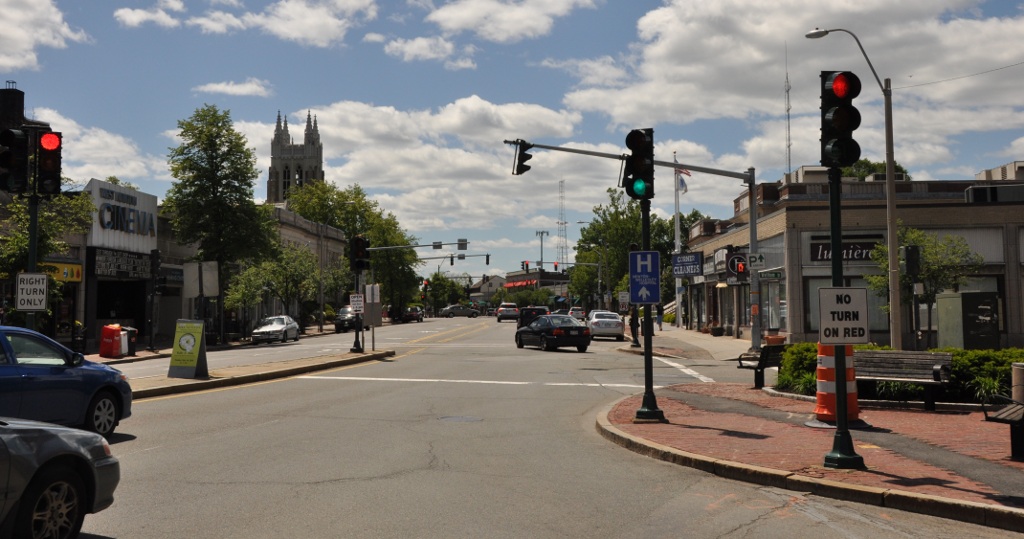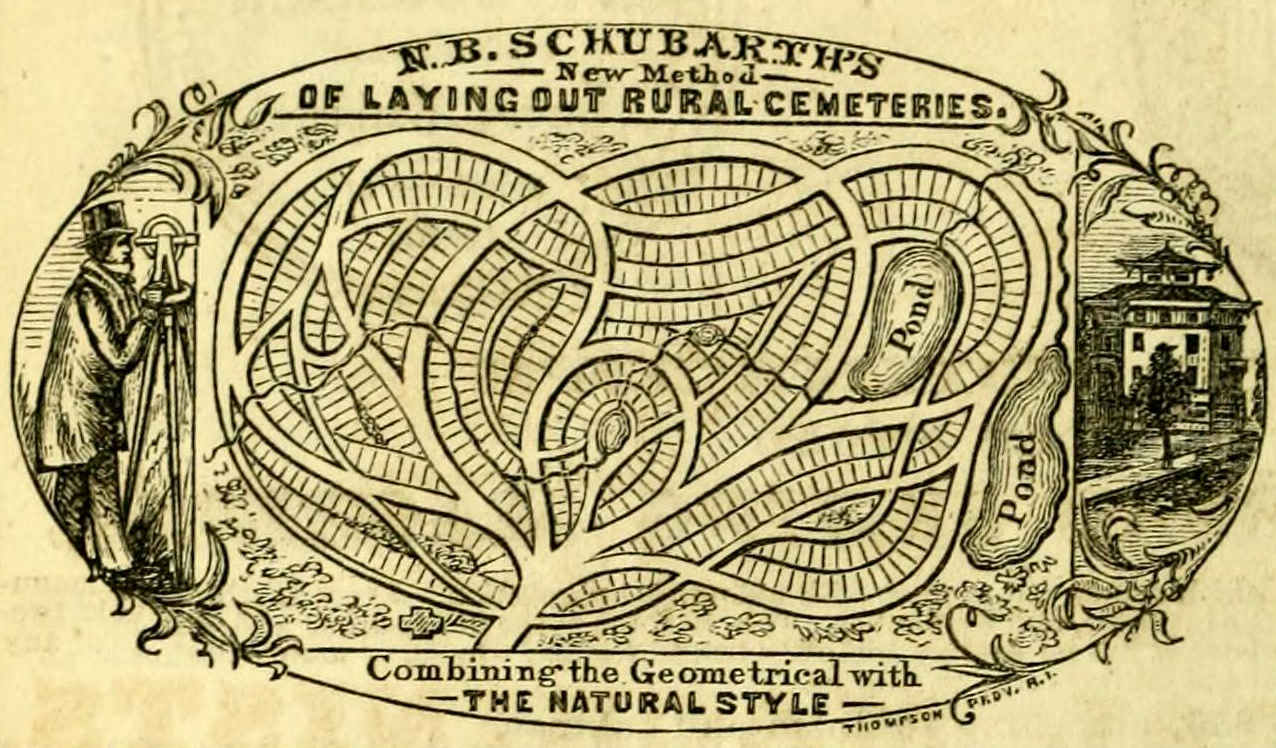|
West Parish Burying Ground
The West Parish Burying Ground, also known as the River Street Burying Ground or River Street Cemetery, is a cemetery located at River and Cherry streets in West Newton, Massachusetts, and is listed on the National Register of Historic Places. Established in 1777, the cemetery is owned and maintained by the City of Newton; the Second Church in Newton, its original owner, was known as the ''West Parish''. Description and history The cemetery occupies a roughly rectangular plot about in size at the northwest corner of River and Cherry Streets, just north of the village center of West Newton. The street sides of the property are bounded by a low fieldstone wall, which is topped by a distinctive wrought iron cross-link fence. The entrance, on River Street, is marked by dressed granite posts, and is secured by a chain-link gate. There is no paved interior circulation lane, but a rectilinear grid of pathways is discernible in the landscape. The cemetery is divided into a combinat ... [...More Info...] [...Related Items...] OR: [Wikipedia] [Google] [Baidu] |
West Newton, Massachusetts
West Newton is one of the thirteen villages within the city of Newton in Middlesex County, Massachusetts, United States. Among the oldest of the thirteen Newton villages, the West Newton Village Center is a National Register Historic District. The postal ("Zip") code 02465 roughly matches the village limits. Location West Newton is located in the north central part of Newton and is bordered by the town of Waltham on the north and by the villages of Auburndale on the west, Newton Lower Falls on the extreme southwest, Newtonville on the east, and Waban on the south. Railroad Station The West Newton train stop is located near an inn (now small shops) that served as a stagecoach stop. The original station structure was destroyed in the construction of the Massachusetts Turnpike, although the station itself still exists as a stop on the commuter rail. West Newton Square West Newton Square, the town center of West Newton, is home to many local businesses and venues. These in ... [...More Info...] [...Related Items...] OR: [Wikipedia] [Google] [Baidu] |
National Register Of Historic Places
The National Register of Historic Places (NRHP) is the United States federal government's official list of districts, sites, buildings, structures and objects deemed worthy of preservation for their historical significance or "great artistic value". A property listed in the National Register, or located within a National Register Historic District, may qualify for tax incentives derived from the total value of expenses incurred in preserving the property. The passage of the National Historic Preservation Act (NHPA) in 1966 established the National Register and the process for adding properties to it. Of the more than one and a half million properties on the National Register, 95,000 are listed individually. The remainder are contributing resources within historic districts. For most of its history, the National Register has been administered by the National Park Service (NPS), an agency within the U.S. Department of the Interior. Its goals are to help property owners and inte ... [...More Info...] [...Related Items...] OR: [Wikipedia] [Google] [Baidu] |
Second Church In Newton
The Second Church in Newton, United Church of Christ, is located at 60 Highland Street in West Newton, a village of Newton, Massachusetts. This church is rooted in the Congregational denomination, welcomes all visitors, and does not require uniformity of belief. Its present church building, a Gothic Victorian structure designed by architects Allen & Collens and completed in 1916, was listed in the National Register of Historic Places (as "Second Church of Newton") in 1990. Description and history The current building is the third home for this congregation. West Parish of Newton was organized in 1764 and formally recognized in 1778. At that time it was Newton's second parish. As the congregation grew, a meeting house was built on Washington Street in 1848, when the first structure was adapted for use as town hall as part of the town government's move to West Newton. By the start of the 20th century, the congregation was outgrowing its Washington Street home. Planning to buil ... [...More Info...] [...Related Items...] OR: [Wikipedia] [Google] [Baidu] |
Newton Corner, Massachusetts
Newton Corner is one of the thirteen villages within the city of Newton in Middlesex County, Massachusetts, United States. Newton Corner borders Brighton, a neighborhood of Boston, as well as the city of Watertown, Massachusetts. Newton Corner is divided by the Massachusetts Turnpike (I-90), it has on-off access in both directions at Exit 17. Newton Corner station formerly saw streetcar and commuter rail service; it now serves as a busy bus depot serving downtown express routes as well as local buses. History Newton Corner sprang up in the late 1600s, when a village grew at the intersection of Washington and Centre street, then rural roads. Stores, farm stands, and a tavern came to service the steady stream of traffic. A railway came through in 1834. The Massachusetts Turnpike was built through the center of Newton Corner in the 1960s, along the line of the former railroad. An interchange was also added. According to author Yanni Tsipis, "Newton Corner really ceased to be a t ... [...More Info...] [...Related Items...] OR: [Wikipedia] [Google] [Baidu] |
Rural Cemetery
A rural cemetery or garden cemetery is a style of cemetery that became popular in the United States and Europe in the mid-nineteenth century due to the overcrowding and health concerns of urban cemeteries. They were typically built one to five miles outside of the city, far enough to be separated from the city, but close enough for visitors. They often contain elaborate monuments, memorials, and mausoleums in a landscaped park-like setting. The rural cemetery movement mirrored changing attitudes toward death in the nineteenth century. Images of hope and immortality were popular in rural cemeteries in contrast to the puritanical pessimism depicted in earlier cemeteries. Statues and memorials included depictions of angels and cherubs as well as botanical motifs such as ivy representing memory, oak leaves for immortality, poppies for sleep and acorns for life. From their inception, they were intended as civic institutions designed for public use. Before the widespread developmen ... [...More Info...] [...Related Items...] OR: [Wikipedia] [Google] [Baidu] |
National Register Of Historic Places Listings In Newton, Massachusetts
__NOTOC__ The following properties in Newton, Massachusetts are listed on the National Register of Historic Places. They are a subset of all properties in Middlesex County. There are over 180 places listed in Newton. The 13 villages are: * Auburndale * Chestnut Hill *Newton Centre (spelled ''Newton Center'' by the MBTA, but not by the city) *Newton Corner * Newton Highlands * Newton Lower Falls *Newton Upper Falls * Newtonville *Nonantum * Oak Hill * Thompsonville *Waban * West Newton Current listings Notes on Zip Codes used *Most villages have their own Zip Codes, but some do not. To further add to the confusion, the Zip Codes do not always coincide with the village boundaries which are "unofficial" according to the city. Most residents, though, seem to know exactly where the village ... [...More Info...] [...Related Items...] OR: [Wikipedia] [Google] [Baidu] |
East Parish Burying Ground
East Parish Burying Ground, also known as Centre Street Burying Ground or Centre Street Cemetery, is an historic cemetery located at Centre and Cotton streets in the village of Newton Corner in the city of Newton, Massachusetts. On December 23, 1983, it was listed on the National Register of Historic Places. It has been called the "most important, the most evocative and also the most fragile historic site in the city." History East Parish Cemetery dates from the 1660s when the term parish had both a political and religious connotation. The East Parish Church was First Church in Newton organized in 1664, which celebrated its 300th anniversary in 1964, but was dissolved in 1973 after failed attempts to merge with its two daughter churches, Second Church in Newton (West Parish) and Eliot Church. First Church's last church building at 1115 Centre Street in Newton Centre is now the Greek Evangelical Church of Boston. First Settlers Monument The First Settlers Monument was erected ... [...More Info...] [...Related Items...] OR: [Wikipedia] [Google] [Baidu] |
National Register Of Historic Places In Newton, Massachusetts
__NOTOC__ The following properties in Newton, Massachusetts are listed on the National Register of Historic Places. They are a subset of all properties in Middlesex County. There are over 180 places listed in Newton. The 13 villages are: * Auburndale * Chestnut Hill *Newton Centre (spelled ''Newton Center'' by the MBTA, but not by the city) *Newton Corner * Newton Highlands * Newton Lower Falls *Newton Upper Falls * Newtonville *Nonantum * Oak Hill * Thompsonville *Waban * West Newton Current listings Notes on Zip Codes used *Most villages have their own Zip Codes, but some do not. To further add to the confusion, the Zip Codes do not always coincide with the village boundaries which are "unofficial" according to the city. Most residents, though, seem to know exactly where the village l ... [...More Info...] [...Related Items...] OR: [Wikipedia] [Google] [Baidu] |
Cemeteries On The National Register Of Historic Places In Massachusetts
A cemetery, burial ground, gravesite or graveyard is a place where the remains of dead people are buried or otherwise interred. The word ''cemetery'' (from Greek , "sleeping place") implies that the land is specifically designated as a burial ground and originally applied to the Roman catacombs. The term ''graveyard'' is often used interchangeably with cemetery, but a graveyard primarily refers to a burial ground within a churchyard. The intact or cremated remains of people may be interred in a grave, commonly referred to as burial, or in a tomb, an "above-ground grave" (resembling a sarcophagus), a mausoleum, columbarium, niche, or other edifice. In Western cultures, funeral ceremonies are often observed in cemeteries. These ceremonies or rites of passage differ according to cultural practices and religious beliefs. Modern cemeteries often include crematoria, and some grounds previously used for both, continue as crematoria as a principal use long after the interment areas ... [...More Info...] [...Related Items...] OR: [Wikipedia] [Google] [Baidu] |





